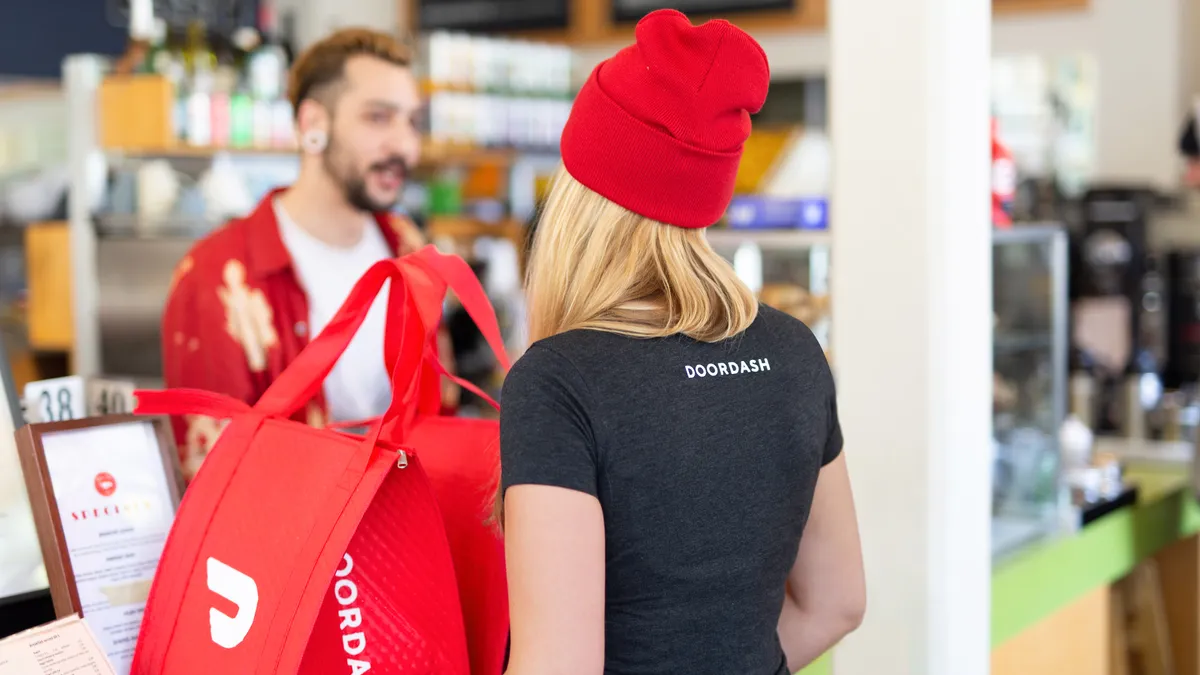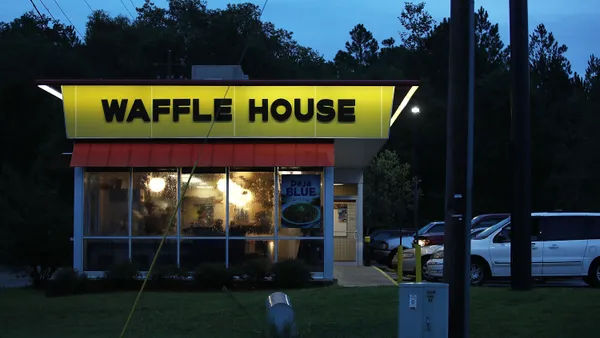Dive Brief:
- A new report from Allied Market Research shows that the global food delivery mobile app market is expected to grow at a compound annual growth rate of 27.9% — to $16.6 billion — by 2023, according to a news release. The market was valued at about $3.79 billion in 2017.
- Per the report, the main drivers of this growth include high internet penetration, higher standard of living in developing countries and an increase in mobile usage. Further, increased investments in digital marketing strategies are expected to provide more opportunities for delivery players.
- The food delivery market segment is predicted to grow the fastest — 28% — by 2023. In 2017, the segment held the largest share, contributing to more than four-fifths of the total market.
Dive Insight:
The food delivery mobile app’s projected growth is perhaps unsurprising to virtually everyone who follows the food delivery space. Operators and analysts alike have both stated very clearly that delivery is here to stay.
But the levels of growth estimated in this report — near 30% across the board — are staggering nonetheless. There is plenty of runway here, however. Off-premise channels currently account for just 3% of all restaurant orders at this time. As digital ordering grows and companies scale through third-party aggregates, that number should ramp up pretty quickly. Morgan Stanley predicts that delivery growth could grow by up to 40% of industry sales within the next few years.
Such growth could flip current consumer preferences. A recent study from E-Poll Market Research shows that most consumers still order food directly through a restaurant brand (53%), trusting them more. As aggregates continue to grow, however, access to these app and services is going to be a growth driver by nature. Postmates and Uber, for example, are expected to leverage imminent IPOs to, in part, beef up their marketing presence, joining Grubhub and DoorDash with marketing campaigns to shore up awareness. As consumers grow more familiar with these apps, some might find the versatility to be appealing and convenient. Consumers who aren’t sure what they’re craving for dinner can just open one of these apps to “shop around” for options, for example, while gaining a view of wait times and fees.
Unless they’re seeking some type of collaborative relationship, like Yum Brands and Grubhub, this growth could spell some trouble for restaurants who are already navigating an intensely competitive environment. For starters, aggregates often own much of the consumer data from the restaurant brands they work with. Such competitive pressure could also get worse as consumers increasingly adopt third-party apps and as aggregates explore new models such as ghost kitchens and catering to compete directly.














